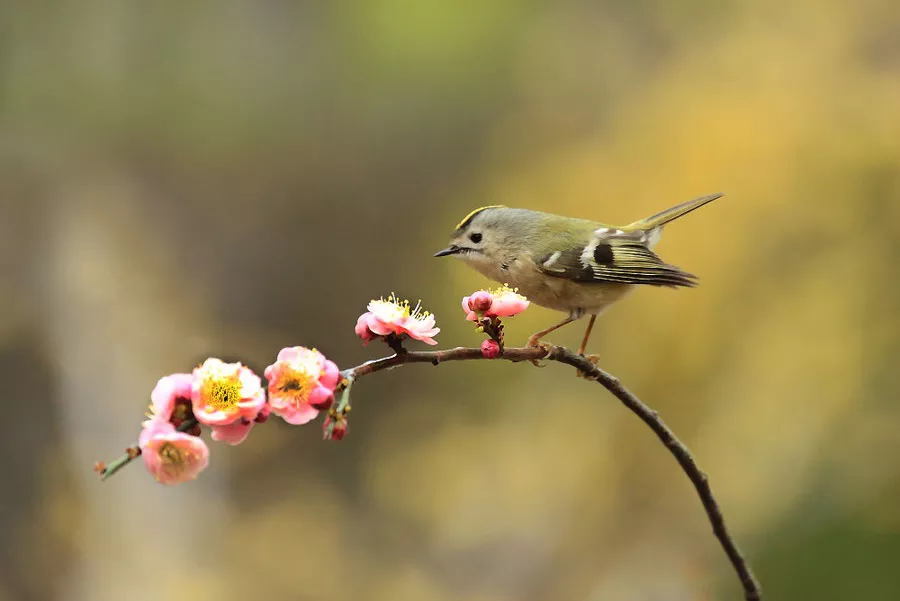The United Kingdom is home to a wide variety of bird species, ranging from large predatory birds like eagles and hawks to small, delicate songbirds. While many of these birds are iconic and well-known, others are less famous but equally fascinating.
One of the most intriguing aspects of UK birdlife is the sheer diversity of sizes represented among the various species. Among the most diminutive of all British birds is the goldcrest, a tiny songbird that is often considered to be the smallest bird in the UK.
Goldcrests are members of the kinglet family, a group of small, active birds that are widespread throughout Europe and Asia. They are easily recognized by their bright golden crowns, which contrast sharply with their olive-green backs and wings. Goldcrests also have white eye-rings and black and white stripes on their faces, which further set them apart from other birds.
Despite their tiny size – goldcrests typically measure only 8-10 centimeters (3-4 inches) in length and weigh just a few grams – these birds are surprisingly hardy and adaptable. They are found in a wide range of habitats, including coniferous and deciduous forests, parks, gardens, and hedgerows, and are often seen flitting about in the branches of trees and bushes in search of insects and spiders.
Goldcrests are also notable for their remarkable endurance. In winter, when food supplies are scarce and temperatures can plummet to well below freezing, these birds have been known to enter a state of torpor, a kind of deep sleep that allows them to conserve energy and survive harsh conditions. During torpor, the goldcrest’s body temperature drops significantly, and its metabolic rate slows to a fraction of its normal level.
Despite their hardiness, goldcrests face a number of threats in the modern world. Like many small birds, they are vulnerable to predation by domestic cats and other predators, and their habitat is often disrupted or destroyed by human development. Climate change also poses a significant threat to these birds, as it can disrupt their breeding and migration patterns and alter the availability of food.
Despite these challenges, goldcrests remain a beloved and fascinating species for bird enthusiasts and nature lovers alike. Whether you spot one flitting about in your local park or catch a glimpse of one in the wild, these tiny birds are sure to leave a lasting impression.


 Facebook
Facebook  Instagram
Instagram  Youtube
Youtube 